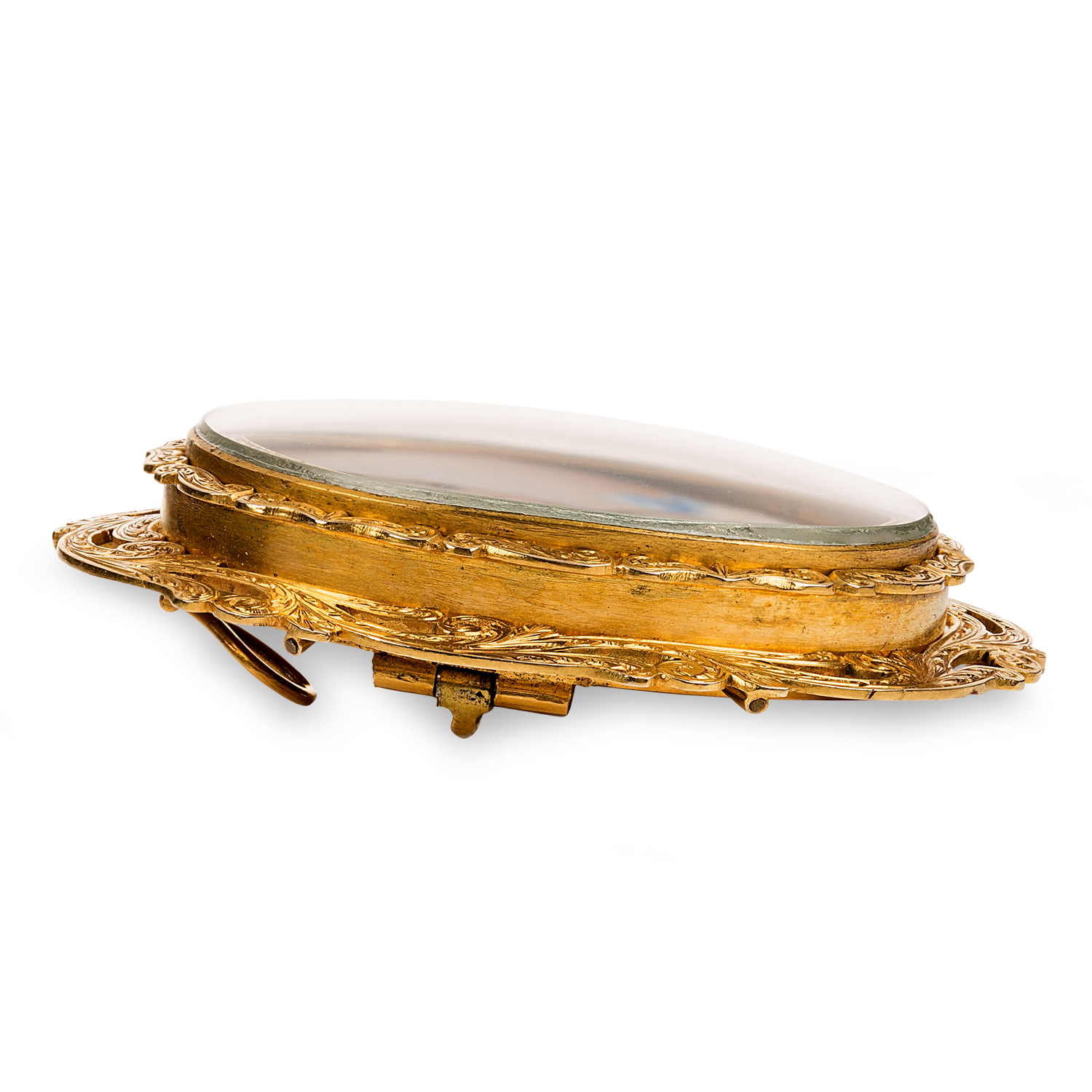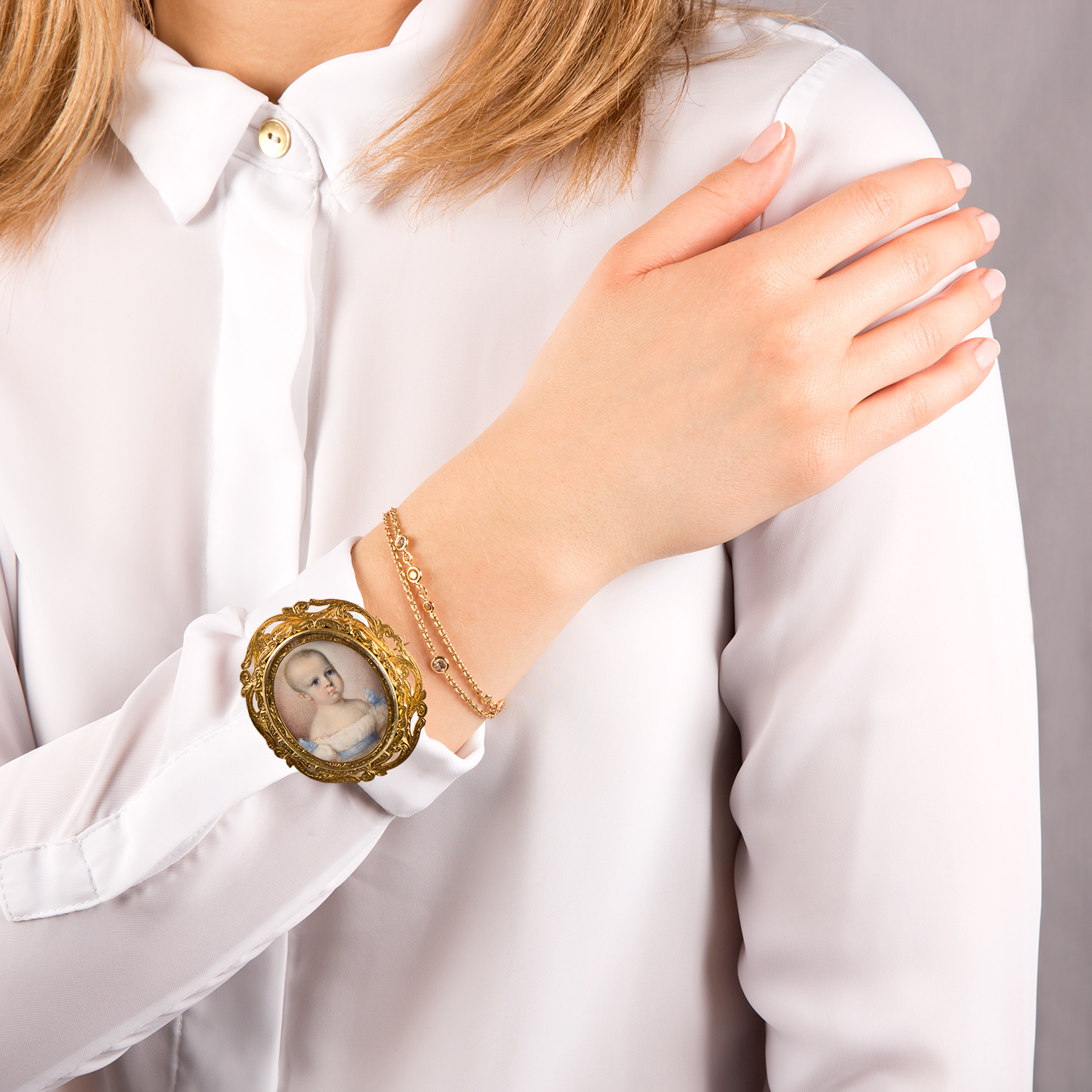Material
In 15K yellow gold, richly ornamented frame, ivory painting of a noble child, with a loop allowing for wear as a pendant, handmade
Mark
No mark
Size and Weight
Dimensions 49.4 x 44 mm, weight 17.3 g
Condition
Excellent
Additional Features
Accompanied by a Lohri certificate
Reference-Number
EABO009
Classicism
(1750 to 1830)
Inspired by antiquity
Like the name suggests, this era of art history follows the classical role models from ancient times. In line with this, the pieces of jewellery are elegant and characterized by linear and distinct shapes. High-quality, finely crafted brooches and lockets set with cameo, ivory and enamel are frequently found. The longing for classic beauty is reflected in these unique historical pieces that often display Greek key patterns, waveband motifs or leaf ornamentation. Some very valuable jewels set with diamonds rubies, pearls, emeralds or sapphires exist from this period and are sought after and highly paid for by collectors today.
Biedermeier
(1815 to 1848)
Love and Friendship
Jewellery from the Biedermeier era takes its bearings in naturalistic and personal themes. It is during this period that the idolization of friendship becomes widespread and rings can be found bearing symbols and inscriptions that immortalize such relationships. At the same time, mourning jewellery as a form of remembrance becomes popular. Because this era takes place at the end of the Napoleonic Wars, precious metals are very scarce, hence, cut steel and iron jewellery are produced. In addition, small and affordable precious stones and materials such as turquoise, amethyst, topaz, citrine, garnet, horn and coral are frequently used. Specific types of jewellery, such as jewellery made of hair or souvenir jewellery, are strongly associated with this era.







